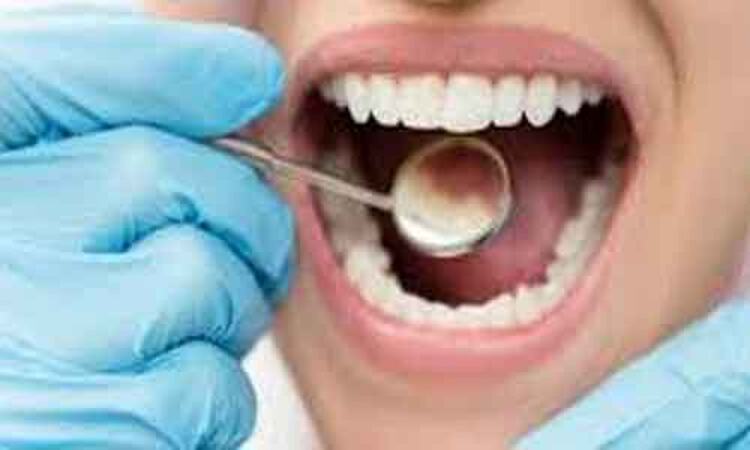- Home
- Medical news & Guidelines
- Anesthesiology
- Cardiology and CTVS
- Critical Care
- Dentistry
- Dermatology
- Diabetes and Endocrinology
- ENT
- Gastroenterology
- Medicine
- Nephrology
- Neurology
- Obstretics-Gynaecology
- Oncology
- Ophthalmology
- Orthopaedics
- Pediatrics-Neonatology
- Psychiatry
- Pulmonology
- Radiology
- Surgery
- Urology
- Laboratory Medicine
- Diet
- Nursing
- Paramedical
- Physiotherapy
- Health news
- Fact Check
- Bone Health Fact Check
- Brain Health Fact Check
- Cancer Related Fact Check
- Child Care Fact Check
- Dental and oral health fact check
- Diabetes and metabolic health fact check
- Diet and Nutrition Fact Check
- Eye and ENT Care Fact Check
- Fitness fact check
- Gut health fact check
- Heart health fact check
- Kidney health fact check
- Medical education fact check
- Men's health fact check
- Respiratory fact check
- Skin and hair care fact check
- Vaccine and Immunization fact check
- Women's health fact check
- AYUSH
- State News
- Andaman and Nicobar Islands
- Andhra Pradesh
- Arunachal Pradesh
- Assam
- Bihar
- Chandigarh
- Chattisgarh
- Dadra and Nagar Haveli
- Daman and Diu
- Delhi
- Goa
- Gujarat
- Haryana
- Himachal Pradesh
- Jammu & Kashmir
- Jharkhand
- Karnataka
- Kerala
- Ladakh
- Lakshadweep
- Madhya Pradesh
- Maharashtra
- Manipur
- Meghalaya
- Mizoram
- Nagaland
- Odisha
- Puducherry
- Punjab
- Rajasthan
- Sikkim
- Tamil Nadu
- Telangana
- Tripura
- Uttar Pradesh
- Uttrakhand
- West Bengal
- Medical Education
- Industry
Hydroxy acids as etchants tied to appropriate bond strength and less dentin degradation: Study

Researchers have recently noted that glycolic acid (Gly), tartaric acid (Ta) and gluconic acid (Glu) resulted in adequate bonding performance and reduced dentin degradation and are potential alternative etchants to improve long-term stability of adhesive restorations, as published in the Journal of Dentistry.
Cristina de Mattos Pimenta Vidal and colleagues from the Department of Operative Dentistry, College of Dentistry and Dental Clinics, University of Iowa, Iowa City, IA, United States conducted the present study with the main objective to test the demineralization potential, bonding performance, and dentin biostability when using hydroxy acids for etching enamel and dentin.
The authors investigated the surface microhardness, roughness and depth of demineralization after etching enamel and dentin with 35 % glycolic acid (Gly), tartaric acid (Ta), gluconic acid (Glu), gluconolactone (Gln), or phosphoric acid (Pa) (n = 5/group). Dentin micro-tensile bond strength (μTBS) after 24 h or 1 year of bonding (n = 8 teeth/group) and enamel shear bond strength (SBS) after 24 h (n = 10 teeth/group) were obtained.
In dentin, failure mode was classified as adhesive, cohesive in dentin/resin, or mixed. Dentin biostability was assessed by loss of dry weight and collagen degradation after 30-day incubation (n = 10 beams/group). Statistical analysis consisted of ANOVA with post-hoc Tukey's HSD, Tukey-Kramer test, Bonferroni correction, and Fisher's exact tests (α = 0.05).
The following results were noted-
- Gly showed better or similar results than Pa for enamel microhardness and dentin roughness, while no significant differences were observed among Ta, Glu, and Gln (p > .05).
- Hydroxy acids produced significantly shallower demineralization than Pa (p < .05).
- Gln resulted in the lowest SBS and μTBS, while Gly, Glu, Ta, and Pa showed no significant difference.
- There was no significant difference in μTBS between 24 h and 1 year of storage.
- The association between failure mode and etchant was statistically significant after 24 h only (p < .001).
- Hydroxy acids resulted in higher dentin biostability than Pa (p < .05).
Dr. Nandita Mohan is a practicing pediatric dentist with more than 5 years of clinical work experience. Along with this, she is equally interested in keeping herself up to date about the latest developments in the field of medicine and dentistry which is the driving force for her to be in association with Medical Dialogues. She also has her name attached with many publications; both national and international. She has pursued her BDS from Rajiv Gandhi University of Health Sciences, Bangalore and later went to enter her dream specialty (MDS) in the Department of Pedodontics and Preventive Dentistry from Pt. B.D. Sharma University of Health Sciences. Through all the years of experience, her core interest in learning something new has never stopped. She can be contacted at editorial@medicaldialogues.in. Contact no. 011-43720751
Dr Kamal Kant Kohli-MBBS, DTCD- a chest specialist with more than 30 years of practice and a flair for writing clinical articles, Dr Kamal Kant Kohli joined Medical Dialogues as a Chief Editor of Medical News. Besides writing articles, as an editor, he proofreads and verifies all the medical content published on Medical Dialogues including those coming from journals, studies,medical conferences,guidelines etc. Email: drkohli@medicaldialogues.in. Contact no. 011-43720751


